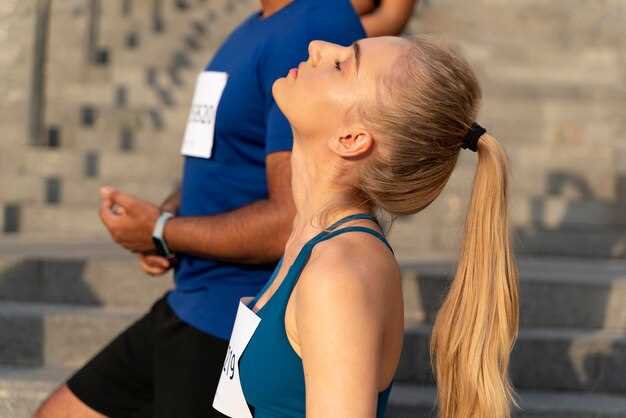
Preparing for a big race is not only about physical training; it also involves honing your mental skills. The right performance mindset can make a significant difference in how you approach the event and how you execute on race day. Developing mental strategies helps athletes build confidence, manage anxiety, and maintain focus, which can ultimately enhance their overall performance.
Visualization is a powerful technique that can be utilized to improve your mental preparedness. By vividly imagining yourself successfully completing the race, you can create a strong mental image that boosts your confidence and shapes your expectations. Additionally, practicing visualization allows you to mentally rehearse specific scenarios, helping you feel more in control when facing the unpredictable nature of race day.
Another crucial aspect is the incorporation of positive self-talk. Replacing negative thoughts with affirming statements can help mitigate performance anxiety. Encouraging phrases, such as “I am prepared” and “I can achieve my goals,” foster a positive mindset that enhances your ability to perform under pressure. Building a strong mental narrative around your experiences reinforces your belief in your capabilities and prepares you for success.
Finally, focusing on breathing techniques can be a game-changer in managing pre-race jitters. Controlled breathing helps reduce stress levels and centers your thoughts, allowing you to enter the race with a calm and composed mindset. By integrating these mental strategies into your pre-race routine, you not only prepare yourself physically but also mentally, ensuring well-rounded performance when it matters the most.
Visualization Techniques to Enhance Performance
Visualization is a powerful mental strategy that athletes can use to improve their performance before a big race. This technique involves creating vivid mental imagery of successful outcomes, allowing athletes to mentally rehearse their skills and strategies. By envisioning themselves executing perfect movements, runners, swimmers, and cyclists can boost their confidence and prepare their minds for competition.
One effective visualization technique is to create detailed mental pictures of the race. Athletes should take the time to imagine the entire course, including the start line, the key turns, and the finish line. By mentally walking through each stage, they can anticipate challenges and mentally prepare for them. This thorough preparation helps reduce anxiety and enhances focus during the actual event.
Another method involves imagining the feelings associated with peak performance. Athletes should visualize themselves feeling strong, agile, and in control while they race. By focusing on the sensations of their body moving effortlessly, they create positive associations that can translate into improved performance on race day. This emotional aspect of visualization can be just as crucial as the physical components.
Incorporating positive affirmations into visualization sessions can further enhance performance. Athletes can repeat phrases that reinforce their self-belief and capabilities, such as “I am strong” or “I can achieve my goals.” Coupling these affirmations with vivid imagery creates a powerful mental state that can lead to improved focus and resilience.
Finally, athletes should practice visualization regularly in the lead-up to their race. Setting aside time each day for focused visualization can solidify these mental images and equip them to face competition with confidence and clarity. By consistently engaging in this practice, they create a mental blueprint that guides them during the race, ultimately enhancing their overall performance.
Breathing Exercises to Maintain Focus

Breathing exercises are a critical component for athletes aiming to enhance their performance before a big race. Proper breathing techniques can help to reduce anxiety, increase concentration, and ultimately improve overall focus. Establishing a mindful breathing routine can pave the way for optimal mental clarity during high-pressure situations.
One effective technique is the 4-7-8 method. This involves inhaling deeply through the nose for a count of four, holding the breath for seven counts, and then exhaling slowly through the mouth for eight counts. This exercise not only calms the mind but also promotes oxygen flow, aiding in peak performance.
Another useful exercise is diaphragmatic breathing. Athletes can enhance lung capacity and systematize their breathing patterns by placing one hand on their chest and the other on their abdomen. As they inhale deeply, the focus should be on expanding the abdomen rather than the chest, ensuring a full breath. This technique helps to ground the mind and prepare the body for the demands of the race.
Box breathing, a technique often used by elite performers, is also beneficial. It consists of inhaling for a count of four, holding for four, exhaling for four, and then pausing for another four counts. This structured approach promotes mental stability and helps athletes maintain a steady focus, reducing performance anxiety.
Incorporating these breathing exercises into your pre-race routine can significantly enhance your mental state. By reducing stress and fostering a calm atmosphere, athletes can better concentrate on their goals, ultimately leading to improved race performance. Regular practice of these techniques not only prepares the athlete for specific events but also builds resilience over time, making it easier to face the challenges of competition with confidence.
Setting Achievable Goals to Boost Confidence

One of the most effective ways to enhance your confidence before a big race is by setting achievable goals. When you break down your training and performance objectives into smaller, manageable tasks, it helps to create a clear focus. This focused approach not only makes the process less overwhelming but also allows for incremental successes that can significantly boost your self-esteem.
Start by identifying specific aspects of your performance you want to improve, such as pacing, endurance, or technique. Instead of aiming for an abstract outcome like “I want to win,” focus on achievable goals such as “I will maintain a consistent pace during my training runs” or “I will improve my 5K time by 30 seconds.” These objectives should be specific, measurable, attainable, relevant, and time-bound (SMART), which aids in keeping your motivation high.
Tracking your progress toward these goals is equally important. Keeping a running log or journal can help you visualize improvements, reinforcing your belief in your capabilities. Celebrate small victories along the way, as each completed goal acts as a stepping stone to greater confidence.
Lastly, remember that it’s natural to face setbacks. Instead of viewing them as failures, reframe them as opportunities to learn and adjust your strategy. This shift in mindset helps maintain your focus and encourages a resilient attitude as you work towards your race day expectations.











